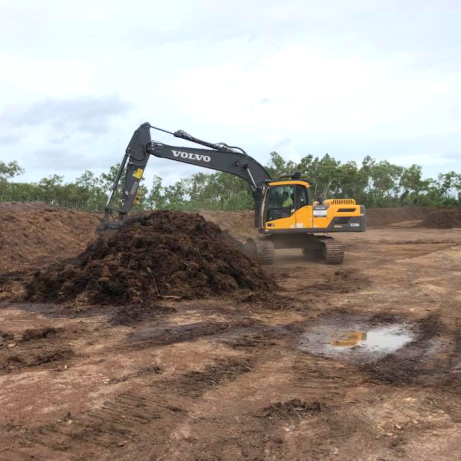COMPOSTING

During the land clearing process, the old or dead trees and branches are used for organic composting. The higher the decomposition, the better the compost.
compost explained
Technically, compost results from the controlled decomposition of organic matter by bacteria, actinomycetes and fungi. But in reality, it is a rich nutrient to stimulate growth for large land areas or smaller gardens and vegie patches. A mature compost can supply almost every nutrient required for plant growth in an existing form, particularly nitrogen. Composting will alter the availability of nutrients from the feedstock (raw materials).
making the best use
Using aged compost in soil restoration is likely to provide many more benefits than that of a fertilizer application. It has a strong tendency to improve the water-holding capacity and in clay textured land a good compost will reduce the bulk density thereby improving the exchange of air and water through the soil base. Nutrients available for plant growth are reliant on two factors: 1) the attributes of the bulking agent, and 2) the stability of the compost. Sawdust has almost no nitrogen, and in the process of decomposition, a significant amount of nitrogen is necessary. On the other hand, garden trimmings (particularly if grass clippings are existent) that have a fair amount of nitrogen, usually need no nitrogen from other resources, and in some instances give out some of their nitrogen into the soil.
